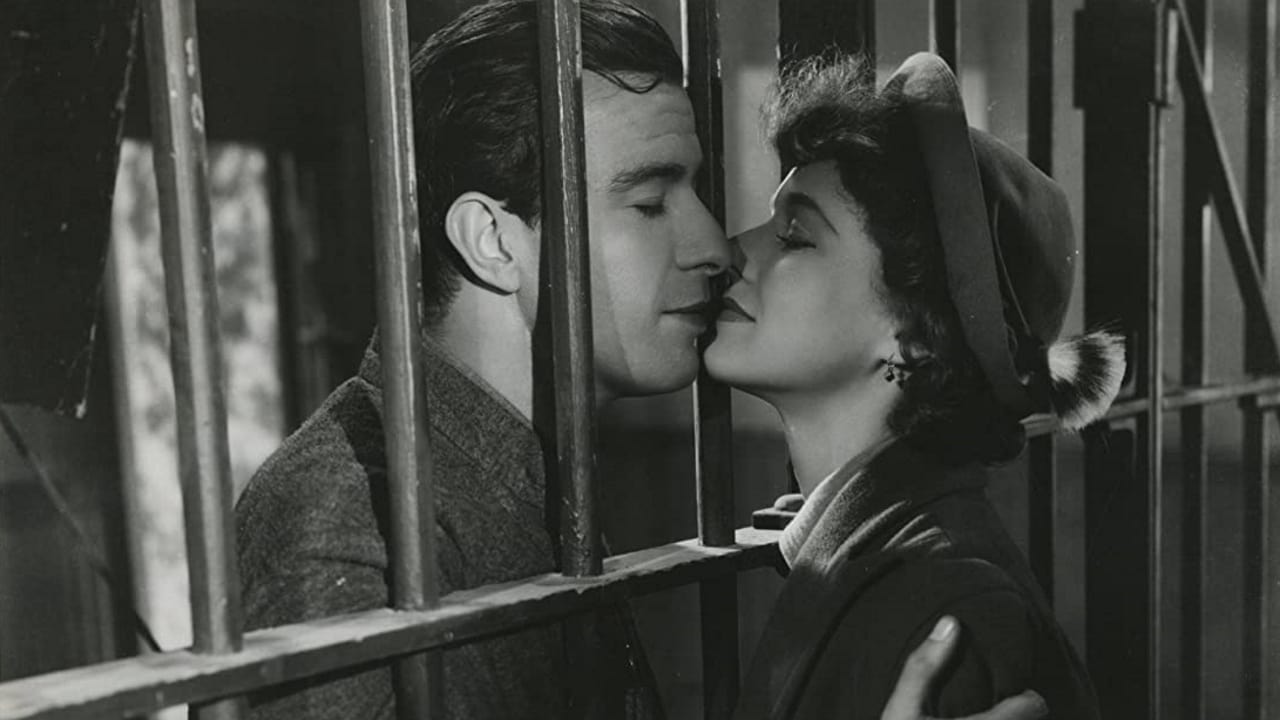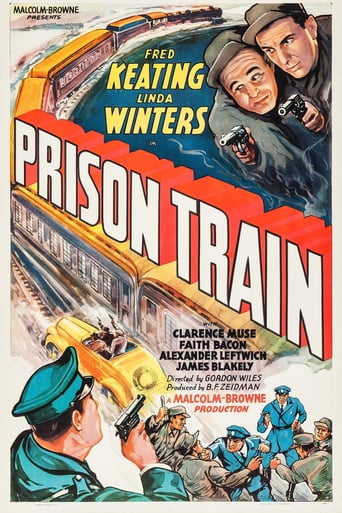

I did not expect much at all, but I was pleasantly surprised by "Prison Train" (1938) in which director Gordon Wiles, of all people, makes such an ingenious use of his real locations, stock footage and second- string cast that the result is quite a thrilling film noir which can be favorably compared with "The Narrow Margin", despite the minuscule budget allotted to "Prison Train". Dorothy Comingore comes across as a pleasing heroine, while Peter Potter does okay as the obliging hero, but the movie's stand-out performance is delivered by Clarence Muse who makes the most of his best role ever as one of the villain's heavies on the train.Photographer Marcel Le Picard, who worked on nearly two hundred motion pictures (despite a four year break in the middle of his career, 1934-1937) also does some mightily impressive noirish work here.The film editing of Edward Schroeder is likewise a stand-out. Train buffs, of course, will need no encouragement to watch this movie, but they too will be thrilled far beyond their modest expectations. (Available on a quite presentable Alpha DVD).
... View MoreConvicted of murdering a competitor's son, a gangster is sent away on a prison train. Meanwhile, his sister tries to warn him of a plot aboard the train to kill him.For the gangster obsessed 1930's, the story is suspenseful but basically routine. Nevertheless, this low-budget production does have several notable features. For one, there's the movie's visual flair. Director Wiles was an art director before climbing into the big chair, so his often exotic camera angles and lurid lighting are unusual for a low budget production. At the same time, his artistic ambitions are on more elaborate display in 1947's The Gangster with Barry Sullivan. Too bad that he died so young and that IMDb doesn't have more info on this interesting moviemaker.Also, the movie's notable for Dorothy Comingore's presence. I wouldn't be surprised if Orson Welles caught her in this programmer before casting her in his classic Citizen Kane (1941). Here she projects a unique loveliness and sweet vulnerability that's almost touching and quite a distance from her near shrewish role in Kane. Then too, there's Clarence Muse as a waiter and a long way from the buffoonish roles generally assigned black performers in those days. Plus, he even turns out to be a treacherous bad guy. Note too, that lead actor Fred Keating's name doesn't appear on the movie's poster. Granted, he's pretty obscure among the Hollywood crowd, but he does a good job here as head gangster Frankie Terris.I guess my only complaint is Nestor Paiva who does go way over the top, even for this exotic flick, as the needling Morose. All in all, the story may be unexceptional, but there remain unusual aspects that make the production worth catching up with.
... View MoreClarence Muse was the star of the first all singing, all talking, all dancing film featuring an all black cast. It was "Hearts in Dixie" (1929) but even though Muse fought against demeaning stereo- types and also held a law degree, he was powerless to make a difference in those unenlightened times. After a couple of "race" films, it was back to uncredited parts in films like "Swing High" (1930) and "White Zombie" (1932) or even playing a character by the name of "Whitey" in "Broadway Bill" (1934). Although "train steward" doesn't sound important, Muse makes it so and is a very pivotal part of the action in this interesting programmer. Racketeer Frankie Terris is on train bound for Alcatraz. He is fearful for the safety of his sister, Louise (Linda Winters) after he accidentally kills a rival gangster's son, who had tried to get fresh with Louise and wouldn't take no for an answer. Manny Robbins, the boy's grief crazed father, tries to kill Terris after his trial. Unbeknownst to Frankie, Louise, after promising to go on a European vacation, is also aboard the prison train and gets chummy with Adams, who does his best to protect her. Once on board the train, the film picks up - the dim lighting, which made the film look cheap is appropriate here. Clarence Muse has the role of Sam, whom Louise uses as a "go- between" - but he is not as unassuming as he seems. Interestingly, the titled forward portrays Terris as a rat and a weakling but he doesn't seem any worse in the film than some of the others (Manny Robbins and his son). Doroothy Comingore, known as Linda Winters for this film, did quite well as Louise Terris, sister of Frankie. This was one of her very few credited parts until "Citizen Kane", the reason she is remembered today.
... View MoreConsidering its lowly production origins (Equity Pictures), this is a surprisingly tight, absorbing action picture with some good comic asides. Director Wiles, who also helmed several other fine B-pics (like The Gangster) keeps the film moving at a rapid pace without sacrificing character nuances and unexpected camera angles. The ending is a little abrupt, but still nifty. As always, Clarence Muse does an excellent turn with the little material provided in his pivotal part, and the comic relief gets off some good lines. Would make a fine double bill with The Narrow Margin or The Tall Target.
... View More